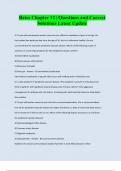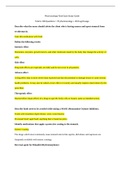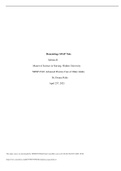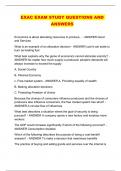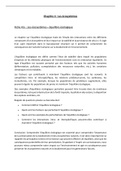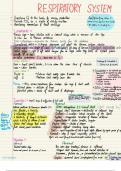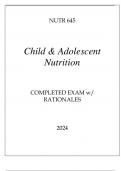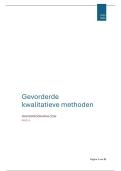caregiver. Infant demonstrates behaviour such as smiling and waving.
Tronick – 1975
Aim – investigate role of reciprocity in infant’s social, emotional, and intellectual
development
Procedure + findings – asked mothers who had been enjoying a dialogue with their
baby to stop moving and maintain a static, unsmiling expression. Babies tried to
tempt their mother into interaction by smiling and became puzzled + distressed
when this didn’t work.
Conclusion – Occasional disconnects in reciprocity are beneficial for development.
Continual disconnects can have a long-term negative effect on an infant’s social
emotional and intellectual development
Interactional synchrony : Two people interact in a mirror pattern – similar
facial + body movements and emotions
Metzoff and Moor – 1997
Aim – Investigate interactional synchrony between infant and caregiver
Procedure + findings – Studied infants as young as 12 weeks old and exposed
them to 4 stimuli. Responses to the stimuli were video recorded. Children between
12-27 weeks would imitate both facial and manual gestures.
Conclusions – Ability to imitate serves a purpose and is an important building block
for later development
Evaluation of research into Caregiver – Infant Interactions
1. The controlled observations often capture fine details as they are generally
well-controlled procedures. For example, both the mother and the infant
are filmed, often from multiple angles, ensuring that fine details of
behaviour can be recorded and analysed. Furthermore, babies are
unaware that they are being observed, so their behaviour doesn’t change
in response to controlled observations. TIASB there is high internal validity
because many extraneous variables are controlled, so it’s easier to
establish cause and effect. However, there may be low ecological validity
because the mother might change her behaviour in response to being
observed.
, 2. Reciprocity and interactional synchrony seem to correlate with greater
development. For example, Heimman’s research has suggested that high
levels of imitation and interaction shown from birth onwards correlate
with better quality of relationships and greater cognitive and social
development. TIASB, it shows that reciprocity and interactional synchrony
are important for development. However, it is difficult to establish cause
and effect because there are other factors that can affect development.
3. It is hard to be exactly sure of an infant’s intentions. For example, whether
the infant is purposely imitating the adult, or their actions are
coincidentally similar is hard to tell. What is being observed could just be
unrelated gestures and expressions. TIAWB it is difficult to discern the
origins of the baby’s behaviour and draw conclusions.
Role of the Father
, ● Schaffer and Emerson (1964) found that the majority of babies became
attached to the mother first (she was the primary attachment). Within a
week a secondary attachment was made. By 18 months, 75% of infants
had formed an attachment with the father.
● Grossman (2002) conducted a longitudinal study looking at both parents’
behaviour and its relationship to the quality of their attachments. The
results suggested that attachment to the father was less important. The
father’s role was more important for play + stimulation, rather than
nurturing.
● Fathers as primary caregivers – Fathers take on more “motherly”
behaviours when they become the primary caregiver. Field (1978) filmed 4
months old children interacting with their parents, and found that fathers
who were the primary caregiver interacted with their children to the same
extent as mothers who were primary caregivers.
Evaluation :
1. The role of fathers as secondary attachment figures can be explained
through both biological processes and gender stereotypes. For example,
stereotypically, women are expected to be more nurturing than men. As
well as this, female hormones create higher levels of nurturing. Therefore,
women are both biologically and socially predisposed to being a primary
attachment figure. TIASB it confirms that differences between mothers and
fathers in the role of raising children can be down to both an individual’s
nature and also nurture.
2. A weakness is that there are inconsistent findings about the role of the
father. For example, researchers who study fathers as secondary
attachment figures tend to find that fathers have a distinct role, whereas
researchers who study fathers as primary attachment figures find that
fathers can take on a more “maternal” role. TIAWB psychologists can’t
easily define the role of the father. Because the findings are inconsistent,
conclusions can’t be drawn.
3. Another criticism is that there are unanswered questions about why
children without fathers don’t develop differently. For example,
MacCallum and Golombok (2004) found that children who grew up in
single-parent or same-sex parent families didn’t develop differently to
those who grew up in heterosexual two-parent families. TIAWB it suggests
that the role of the father is not distinctly important, contradicting the idea

